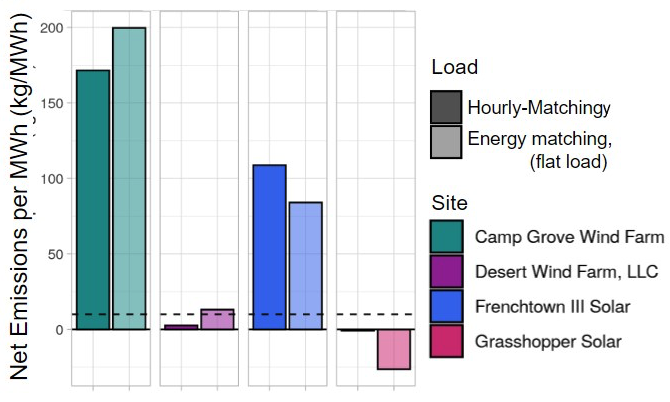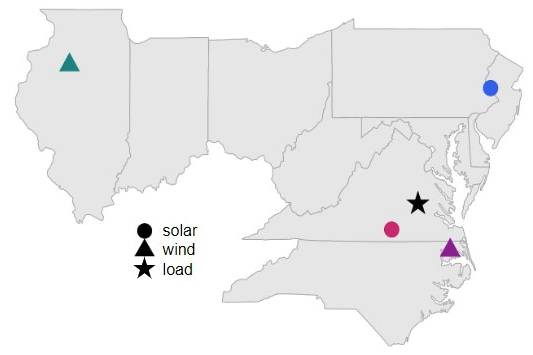

Derived from the scientific paper: Carbon Impact of Intra-Regional Transmission Congestion, which received unanimous support from the ZEROgrid Independent Advisory Initiative advisors (MIT Energy Initiative, Princeton, WattTime, and REsurety). To access the study, please scan the QR code.
Overview
The emissions intensity of electricity can vary greatly within grid regions at any given time due to transmission congestion, yet current environmental policies and carbon accounting frameworks typically ignore these differences. By overlooking transmission constraints, these policies risk increasing system-wide emissions and worsening grid congestion, even when consumption and carbon-free energy are matched hourly. A notable portion of new wind and solar capacity proposed for ERCOT and PJM is planned in areas with substantial congestion (Fig. 1), but without significant transmission expansion, these projects will exacerbate congestion and limit emissions reduction. Through several case studies, we find that congestion-aware emissions metrics, such as Locational Marginal Emissions (LMEs), can more accurately measure the carbon impact of clean energy procurement and enhance market signals to support better grid planning and procurement strategies.
Key takeaways:
- Transmission congestion has a significant impact on price and emissions for the power grid.
a. For example, in 2022, transmission congestion in ERCOT increased system cost by $2.8 billion and system emissions by 13 million tonnes CO2e, which is 8.7% and 7.5% of the system total respectively. - In the same grid at the same hour, different locations frequently observe a difference in emission intensity of hundreds of tonnes of CO2e due to transmission constraints.
a. Even 100% hourly matched consumption with clean energy is often not carbon-free and, in many instances, hourly matching can actually increase operational emissions relative to annual matching (Fig. 2).
b. Hydrogen production that complies with the current proposed 45V criteria will often significantly increase real-world emissions. - Current carbon accounting methods overestimate emissions reductions by overlooking intra-regional transmission congestion.
a. Granular emission data, such as Locational Marginal Emissions rates, incorporate transmission impact, providing a more accurate measurement of the real-world carbon impact of grid connected projects. - Transmission planning and infrastructure expansion must be accelerated to achieve the decarbonization potential of renewable energy development.
a. Clean energy procurement that utilizes marginal emissions rates to inform citing will better incentivize the development of projects in areas of uncongested transmission.

Figure 1: Contour map of 2023 average LME by county across ERCOT and PJM, with the combined wind and solar interconnection queue for each county (gray circles) overlaid.
Scope
This work uses nodal LME data for the past five years in ERCOT and PJM to quantify the effects of congestion on carbon emissions and the efficacy of annual- and hourly- matching carbon accounting frameworks. The impact of intra-regional congestion is shown to be a vital component of effective carbon accounting methods and complementary policies, and policy proposals that frequently overlook this impact risk significantly increasing real-world emissions despite the operational and cost burdens of compliance with hourly matching.


Figure 2: Map of load and procured power from four different renewable project options in PJM; 2023 net emissions from matching scenarios where both rigorously hourly-matched load through load-shifting and 100% annually-matched flat load have significant net emissions.
Assuming equal emissions and perfect generation deliverability within a grid region misses a major factor in determining the induced and avoided carbon emissions, respectively, of load and renewable generation. The induced emissions of a newly built load could be reduced by hundreds of kgCO2e/MWh just by siting it in Eastern Pennsylvania instead of Virginia, for example, and a Virginian wind farm could avoid 50% more carbon than an equivalent farm in Northern Illinois. Prioritizing and incentivizing the development of new renewable projects in less congested regions could meaningfully expedite grid decarbonization, and avoid the exacerbation of already existent congestion-driven deliverability issues.
Return to the resources main menu.



